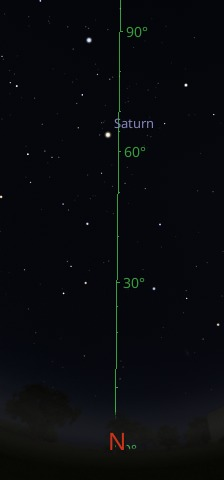Stargazing is often aligned with existentialism (relating to existence or being alive) and our place in the Cosmos, but more importantly in these troubling times it allows us to almost lose ourselves while we gawk and wonder, which is a good thing.
Let’s start our gawking around 6am, a mere 30 minutes before sunrise. Looking 65 deg. up and slightly west of due north one finds the ringed planet Saturn.

From here, drop your gaze downwards and eastwards to 30 deg. above the NE to ENE to find the iron rusty red planet we think we will eventually colonise, Mars. With current space technology it would take around 9 months to get there, or possibly 6 if SpaceX plans eventuate.

By now it must be close to 6.30am and our sense of freedom should be further enthused by the arrival of the bedazzling Jupiter sitting 10 deg. above the NE to ENE.

After this, just wake the kids to watch another glorious sunrise and watch when you tell them that the light they are seeing is 8 minutes and 20 seconds old, so they are seeing the past; a new generation of thinkers like you is born.

On Friday, break out those pagan robes, sacrifice a lamington and realise that it is the winter solstice which represents the shortest day and longest night, when the Earth’s southern hemisphere is tilted away from the Sun.


Dr Craig Bowers MP8138.
All night sky screenshots are courtesy of Stellarium planetarium
Zotti, G., Hoffmann, S. M., Wolf, A., Chéreau, F., & Chéreau, G. (2021). The Simulated Sky: Stellarium for Cultural Astronomy Research. Journal of Skyscape Archaeology, 6(2), 221–258. https://doi.org/10.1558/jsa.17822

Leave a comment